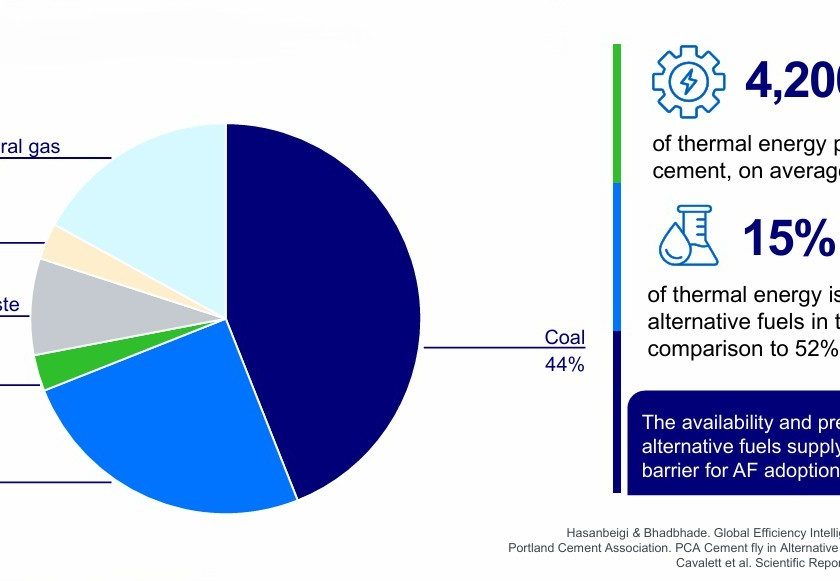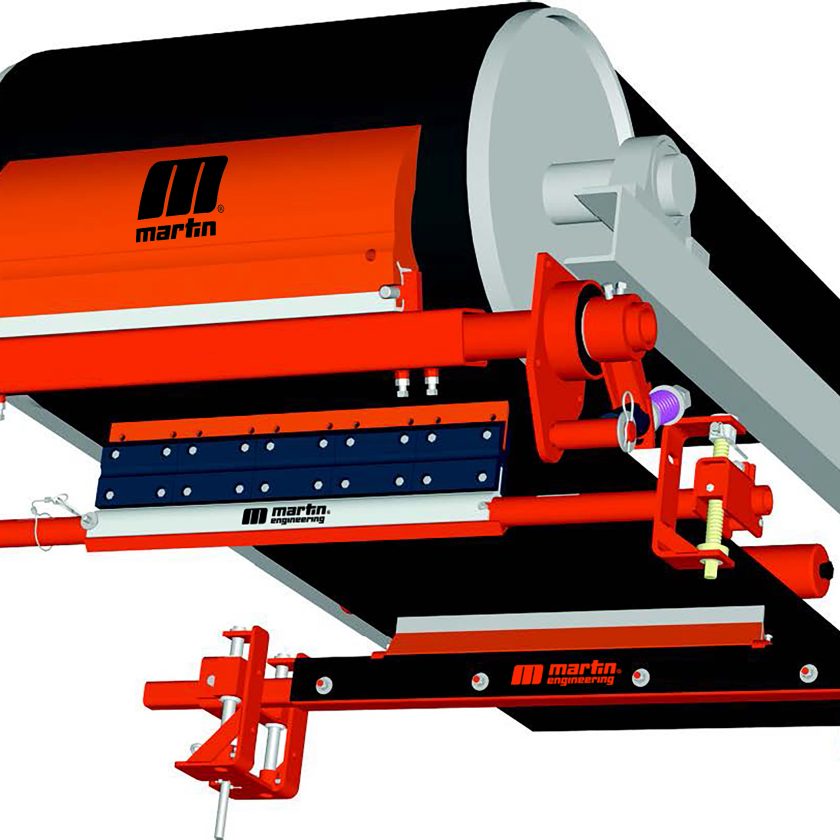The World Cement Association’s PEGASUS Benchmarking Program Aims To Bring A New Culture Of Collaboration And Communication To The Cement Industry. CEO Ian Riley, Explains How.
By Jonathan Rowland

Traditionally, the cement industry has been relatively reticent about sharing of best practices. There are ad hoc exchanges at trade conferences and within the pages of trade magazines. But more often than not, these are driven by suppliers, rather than the cement producers themselves, where competition and anti-trust concerns have long limited the sharing of plant-level practice and performance data to within company walls.
The challenges facing the industry today, however, are on scale beyond the capacity of individual companies to solve internally – and beyond anything the industry has seen in the past.
A History of Non-Association
Portland cement was first patented by English businessman, Joseph Aspdin, in October 1824. It spread quickly in subsequent years. The first portland cement was produced in 1875 in the United States, in the late 1880s in Australia, and in 1914 in India. By the early decades of the 20th century, it had become a global industry.
Yet despite forming regional industry trade groups relatively early (the PCA began its work in 1916), only recently – and only in light of the pressures around climate change, sustainability and social license to operate – has the industry started to adopt truly global initiatives.
The first of these, the Cement Sustainability Initiative (CSI), was established under the auspices of the World Business Council for Sustainable Development at the turn of the millennium. Well over a decade would then pass before both the World Cement Association (WCA) and Global Cement and Concrete Association (GCCA) were formed, in 2016 and 2018, respectively, with the CSI ultimately folded into the GCCA.
These organizations have started to open up the industry to more collaborative approaches of working. The GCCA’s Innovandi network, for example, brings together cement producers, technology and equipment suppliers, and scientific institutions to support research into technologies to reduce carbon emissions. The projects funded by Innovandi are pre-competitive and innovative, however: the technologies of the future.
As important as this work is, it does not help cement producers improve their plant-level operations today. For this, plant operators need to be able to evaluate their day-to-day performance against that of their peers, and to share best practices and common problems. The PEGASUS program from the WCA aims to fill this gap.
PEGASUS Explained
The WCA Plant Evaluation, Gap Analysis and Support Service (PEGASUS) was set up in 2020 after a number of WCA members expressed an interest in participating in a multi-company benchmarking program. The process involves two stages. It begins with data collection from those member plants who agree to be involved. This is often easier said than done, given differences in companies’ data collection and data interpretation methodologies.
Data collection is followed by a dialogue stage, during which the data is discussed. The aim of this step is to identify particular areas that could be improved with limited or no CAPEX.
The first round of benchmarking, involving 12 member companies, began in 2021 with a focus on energy efficiency. Data collection is complete and the dialogue stage is now underway, as Ian Riley, CEO of the WCA told Cement Products in a recent interview.
“We’ve been able to look at power consumption at the plants in some detail and have already identified areas of considerable performance gap,” Riley said. “At the moment, we have three areas of focus: fan efficiency and air leakage, ball mill operations, and pressure drop in various part of the process, particularly the preheater and main dust collector.”
Facilitating Dialogue
A number of member forums aim to address these areas, focusing on solutions that do not incur significant cost. The forums are designed for people working at the plant level, or in the engineering departments of member companies. This “helps keep a very practical approach to improving performance and sharing knowledge,” explained Riley. It also means that participants are coming in with the same day-to-day to challenge: how to efficiently and economically make cement, while maintaining consistent quality and controlling the environmental impact.
Fan Efficiency
The first member forum focused on fan efficiency and air leakage. “We looked at a couple of plants in China that had low fan power consumption and discussed how they had achieved this, e.g., by replacing dampers with variable frequency drives, or replacing critical fans with more-efficient curved-blade designs,” explained Riley.
The tendency to oversize fans during plant design was also touched upon. “One thing you can do in an operating plant is to downsize fans as you replace them over time, so that they draw only as much power as is needed to move the specific volumes of air in your process,” the WCA executive added.
Pressure Drop
The forum on pressure drop was held in March. “What was particularly interesting was to see the significant impact that the newest preheater designs can have not only power consumption, but also on fuel efficiency,” said Riley.
To take one example, at a CNBM plant in China, retrofit of the C1 cyclone led to a reduction in cyclone outlet pressure to between 4,900 and 5,000 Pa. This helped improve airflow through the preheater and, as a result, the plant has been able to increase the capacity of the kiln from just under 6,000 tpd to just under 7,000 tpd.
At a new-build Chinese plant, meanwhile, C1 outlet pressures of between 4,500 Pa and 5,000 Pa are being achieved, with overall clinker power consumption of 45 kWhr/t of clinker and heat consumption of 2,729 mJ/t of clinker.
“Some of these new designs are achieving very impressive energy efficiency,” commented Riley. And with the number of preheater stages rising to six, and even seven, there is the potential for even higher efficiencies. “A lot of new designs are six stages, but some are now seven stages, although these are not really suitable if you have wet feeds, whereas six-stage preheaters can happily handle high moisture feeds.”
On the dust collector side, forum participants looked at materials and designs that reduce pressure drop across the dust collector. For example, new dust collector designs incorporate larger chambers, allowing for lower air velocity through the dust bag. “This brings a number of benefits,” explained Riley, “including reduced power consumption, increased bag life and much lower dust levels.”
New dust collector designs can also be made to fit into the same footprint as older dust collectors, making replacement a viable retrofit.
Future Forums
A forum on ball mill operations will complete the current sound of PEGASUS member forums – but the conversation will continue with events on supplementary cementitious materials and calcined clay planned over the summer. A forum on cooler performance is also in planning with the aim to develop guidelines, based on the PEGASUS data, that guide cement companies in what to consider when planning a cooler replacement.
Looking further ahead, events around carbon emissions – which was also covered in this round of benchmarking – are scheduled for later in the year. These will incorporate the work of another, separate WCA workstream, which is looking specifically at how to reduce carbon emissions within the envelope of a cement plant.
Planning is also underway for the next round of benchmarking, which will examine maintenance and reliability. This is an area where data analysis is going to be much more of a challenge, however, as maintenance-related data is much less standardized and recorded with much less granularity through the industry. “You have mean time between failure, but that’s high level and you can’t really drill down any further into it,” said Riley. “We therefore expect the dialogue phase to be much more important.”
Now a Necessity
“What’s been interesting to observe in the forums is that the flow of information is not just one way,” added Riley. “In the course of discussion, everyone – even participants from the best performing plants – is learning something that they can go away and apply, because we’re not focused on the ‘big ideas’ that everyone is familiar with, but the smaller, practical details of running the plant.”
As a result, ideas are shared not only between companies, but also across geographies. In an industry not used to cooperation, this is a big change – but also much needed. “As we face the challenge of decarbonization, we have to be more open,” Riley concluded. “The challenge ahead is too large not to do this. The fact is, we need a greater degree of collaboration if we are to move as quickly to lower the industry’s carbon emissions as the timescales require.”



